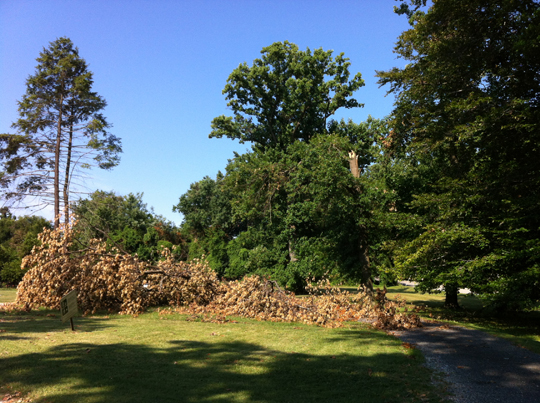During the direcho that struck Baltimore recently, I peered in awe from a second-floor window and saw majestic trees transform in an instant from wild pendulum arcs to – snap! – roof-crushers and firewood.
I’m amazed at how rapidly the strewn tree parts have surrendered their vitality, leaves turning brown within days. One moment, they are a fixed, integral part of a living organism that evolved over many decades. The next, a violent wind severs that intimacy and shoves them into a new earthbound state.
Our idea of the natural order of things is shaken by such events. We see these fallen soldiers as trash, waste, part of all that is wrong with weird weather and slow-to-respond public utilities and overwhelmed cable companies. They are a glaring reminder that nature is as much tooth and claw as she is blue skies and bountiful tree canopies.
Yet, in our rush to pull out chain saws and chipper-shredders, we miss this miracle demonstration of the life cycle. In less time than it took for BGE to restore everyone’s power, the tree limbs were well on their underworld journey, right where they fell, summoned by a mysterious force that will eventually claim us all.
In the rainforest of the Pacific Northwest, fallen trees take over a hundred years to decay. During their slow-motion decline, they can harbor more life than they did when standing upright. Colonnades in these forests are mature trees that grow in a line using the fallen tree as a “nurse log.”
It would be interesting to see how long it takes this tree to fully decay and become soil again, but a cleanup crew will eventually come and remove the debris. Such trees accept their fate with grace and even beauty. Nature has designed it so that, even in death, they will nurture new life. Their very substance is ingested and dissolved by myriad creatures, visible and invisible. They may be dead, but they are far from lifeless.




Leave a Reply